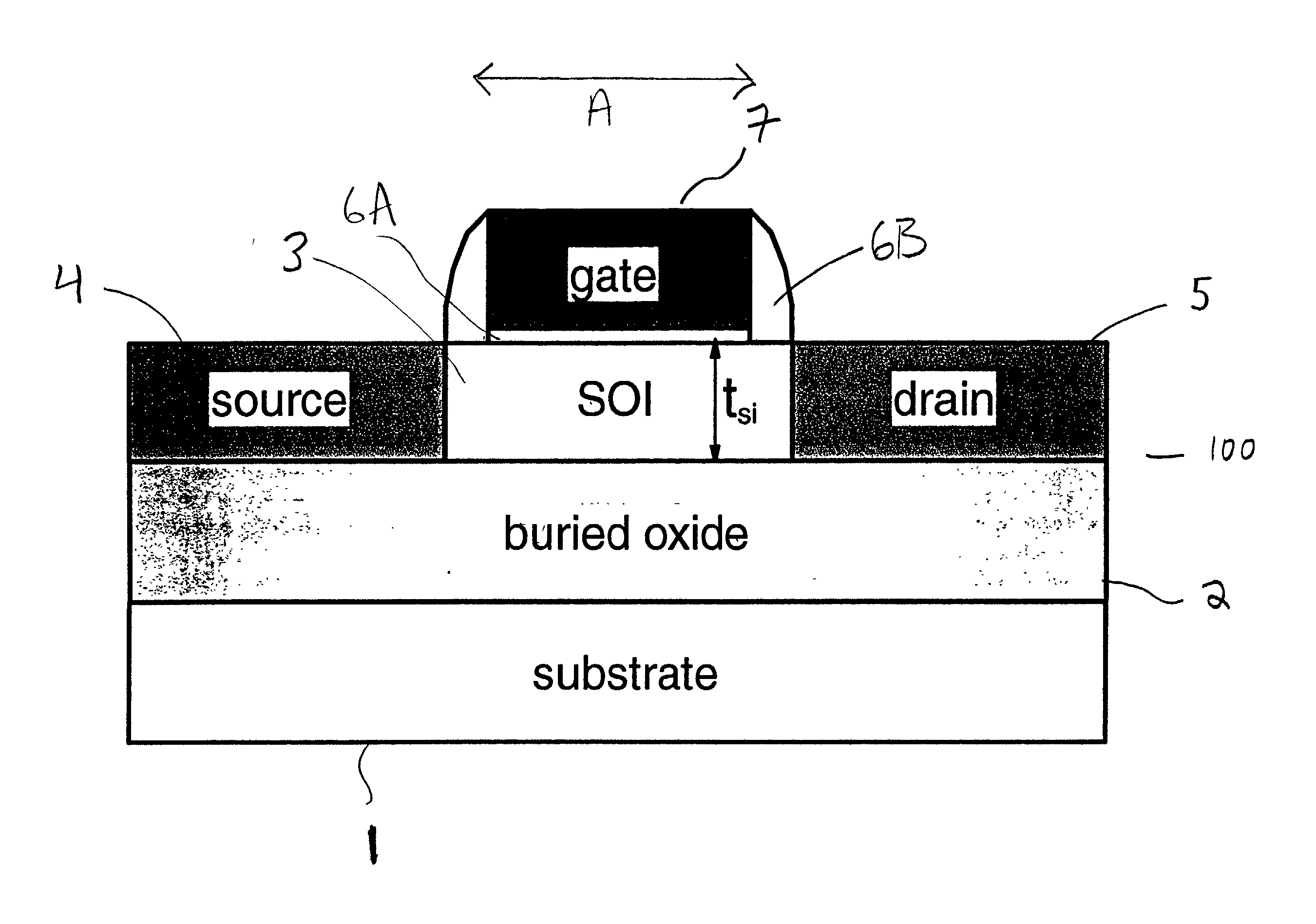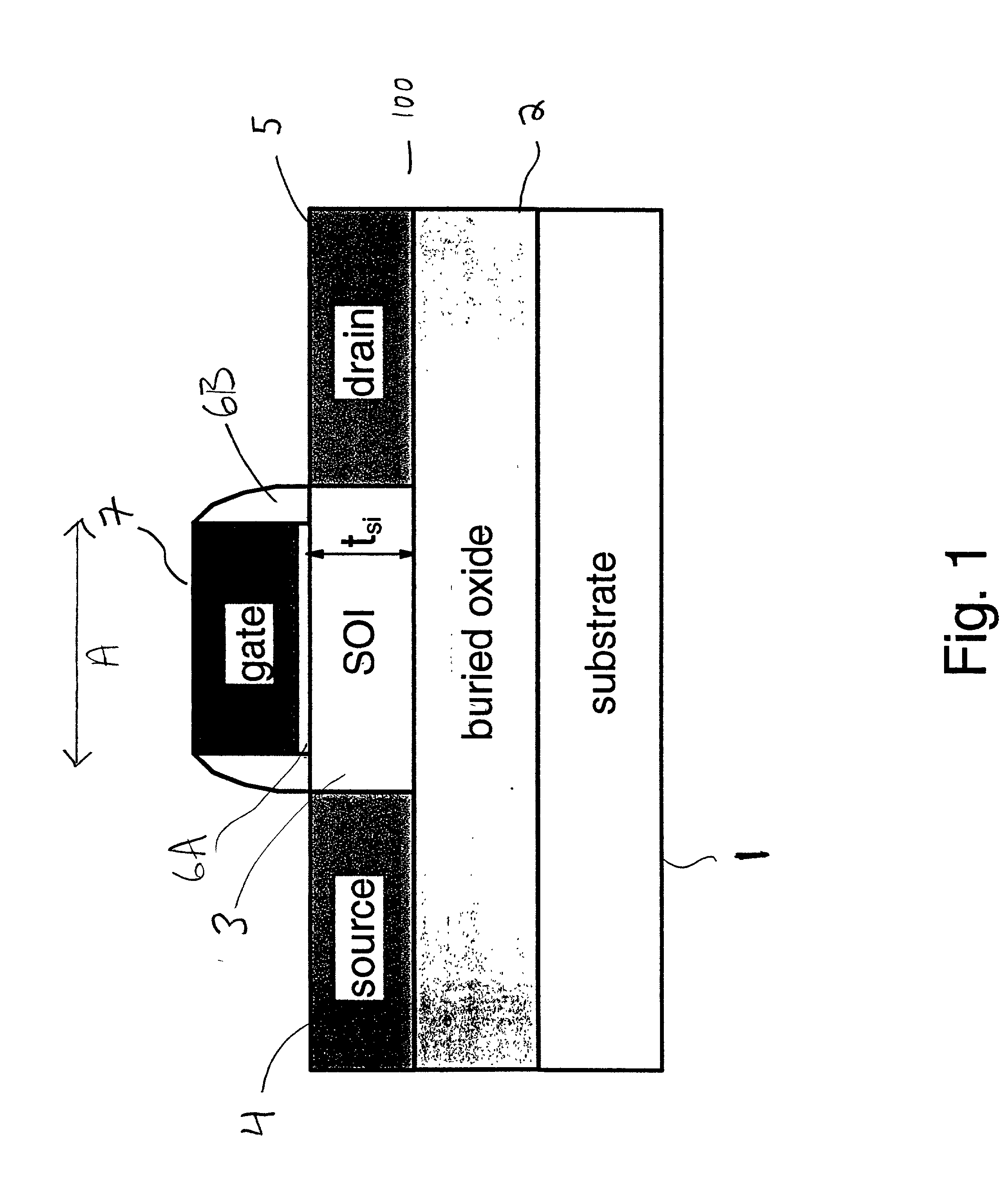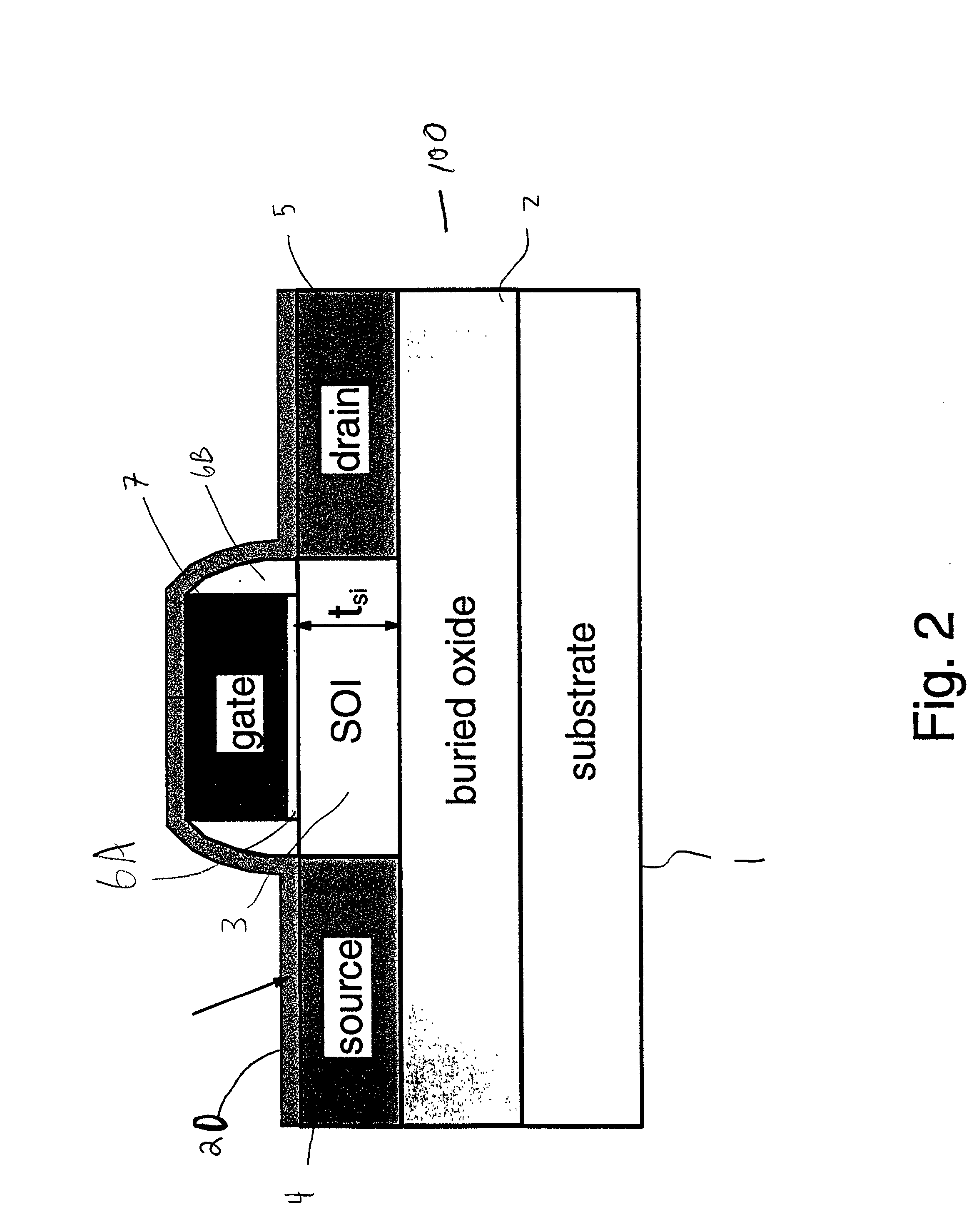Self-aligned silicone process for low resistivity contacts to thin film silicon-on-insulator mosfets
a technology of silicon-on-insulator mosfets and self-aligning silicone, which is applied in the direction of semiconductors, electrical equipment, semiconductor devices, etc., can solve the problems of low parasitic resistance, low source/drain series resistance, and loss of silicide layer efficiency in reducing series resistan
- Summary
- Abstract
- Description
- Claims
- Application Information
AI Technical Summary
Benefits of technology
Problems solved by technology
Method used
Image
Examples
Embodiment Construction
[0029] Referring now to the drawings, and more particularly to FIGS. 1-6, there is shown a preferred embodiment of the method of making of a self-aligned silicide which is applicable to the standard MOSFET structure, and also to non-conventional MOSFETs and structures according to the present invention.
[0030] Referring now to FIG. 1, a conventional MOSFET structure 100 is shown having a substrate 1 formed of silicon, a buried oxide layer 2 (e.g., silicon oxide layer), an SOI layer 3 which thickness noted by t.sub.si, a gate dielectric 6A (e.g., SiO.sub.2), sidewall spacers 6B formed of nitride or oxide, a gate 7 (e.g. doped poly-Si, or metal), and a source 4 and a drain 5 maid into the SOI film 3, typically by an implant.
[0031] The inventive method is directed to making a self-aligned silicide which is applicable to the standard MOSFET structure, and also to non-conventional MOSFETs and structures. For ease of discussion, the present invention will be applied to the conventional MOS...
PUM
| Property | Measurement | Unit |
|---|---|---|
| thickness | aaaaa | aaaaa |
| thickness | aaaaa | aaaaa |
| thickness | aaaaa | aaaaa |
Abstract
Description
Claims
Application Information
 Login to View More
Login to View More - R&D
- Intellectual Property
- Life Sciences
- Materials
- Tech Scout
- Unparalleled Data Quality
- Higher Quality Content
- 60% Fewer Hallucinations
Browse by: Latest US Patents, China's latest patents, Technical Efficacy Thesaurus, Application Domain, Technology Topic, Popular Technical Reports.
© 2025 PatSnap. All rights reserved.Legal|Privacy policy|Modern Slavery Act Transparency Statement|Sitemap|About US| Contact US: help@patsnap.com



